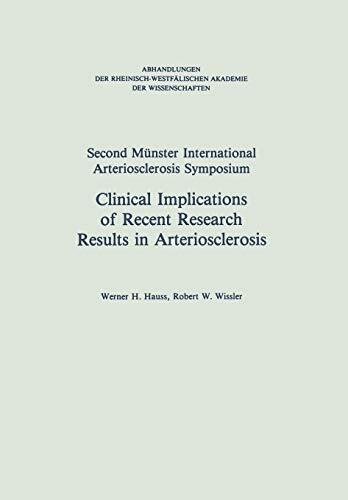
Clinical Implications of Recent Research Results in Arteriosclerosis
由
Robert W. Hauss
,
Robert W. Wissler
还没有评分
Thriller & Suspense
格式
平装书
页数
384
语言
德语
已发布
Dec 27, 2012
出版商
VS Verlag für Sozialwissenschaften
版本
1983
ISBN-10
3322987000
ISBN-13
9783322987006
描述
This comprehensive work delves into the latest findings regarding arteriosclerosis, offering valuable insights for medical professionals and researchers. Hauss and Wissler meticulously explore the clinical implications of recent research, bridging the gap between theoretical knowledge and practical application. Their combined expertise brings forth an analysis that is as informative as it is engaging.
The authors scrutinize various studies, presenting a meticulous examination of factors contributing to arteriosclerosis and its prevalence in today's society. They emphasize the importance of understanding the underlying mechanisms of this condition, shedding light on the complexities that healthcare providers must navigate. Throughout the discussion, attention is given to preventative measures and innovative treatment strategies that could significantly impact patient care.
Understanding arteriosclerosis is essential not only for cardiologists but for all healthcare providers involved in managing cardiovascular health. The insights provided in this work encourage interdisciplinary collaboration, highlighting how advancements in research can be translated into practice. Readers are invited to consider the broader implications of arteriosclerosis within the context of public health.
The narrative is well-supported by empirical data and case studies, making it a valuable resource for those seeking to enhance their knowledge and improve clinical outcomes. Overall, it serves as a crucial reference point for anyone committed to understanding the evolving landscape of arteriosclerosis and its treatment.
The authors scrutinize various studies, presenting a meticulous examination of factors contributing to arteriosclerosis and its prevalence in today's society. They emphasize the importance of understanding the underlying mechanisms of this condition, shedding light on the complexities that healthcare providers must navigate. Throughout the discussion, attention is given to preventative measures and innovative treatment strategies that could significantly impact patient care.
Understanding arteriosclerosis is essential not only for cardiologists but for all healthcare providers involved in managing cardiovascular health. The insights provided in this work encourage interdisciplinary collaboration, highlighting how advancements in research can be translated into practice. Readers are invited to consider the broader implications of arteriosclerosis within the context of public health.
The narrative is well-supported by empirical data and case studies, making it a valuable resource for those seeking to enhance their knowledge and improve clinical outcomes. Overall, it serves as a crucial reference point for anyone committed to understanding the evolving landscape of arteriosclerosis and its treatment.